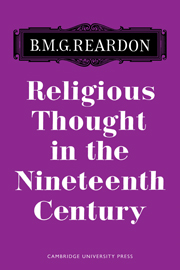Summary
‘The life of an Ultramontane who became a Deist inevitably presents the sharpest contrasts. Honoured by one pope, condemned by another; master of distinguished disciples, and abandoned by them all; winning by his genius, and repelling by his austerities; craving for sympathy, yet flinging it away; intolerant of social life, yet crushed by solitude; meteoric alike in brilliancy and eclipse; alternating between noble conceptions and small-minded perversities; singularly capable in intellect, yet practically as helpless as a child; merciless in criticism, yet acutely sensitive; affected with constant ill-health and the morbid depression of a Breton temperament; logical and imaginative; martyr to noble aims, unworldly, superior to all personal ambitions while serenely conscious of his power’—such, with little exaggeration, was Félicité Robert de Lamennais, priest, philosopher and political theorist, and among the Catholic clergy of the nineteenth century the only rival in personal magnetism as in literary gift of J. H. Newman himself In both the ultramontane and liberal Catholic movements he is the key-figure, yet he remains, like Newman, an individualist. At one time the fervent advocate of a Catholic renaissance, the course he took only carried him in the end to a disillusioned rejection of all orthodox religious belief.
Born at St Malo in 1782, the son of an ennobled shipbuilder, his health was never robust, whilst temperamentally he was sensitive to an almost morbid degree. Inclined in youth to rationalism, his philosophical and historical studies convinced him of the necessity of faith and in particular of the importance of the social function of religion.
- Type
- Chapter
- Information
- Religious Thought in the Nineteenth Century , pp. 184 - 195Publisher: Cambridge University PressPrint publication year: 1966

